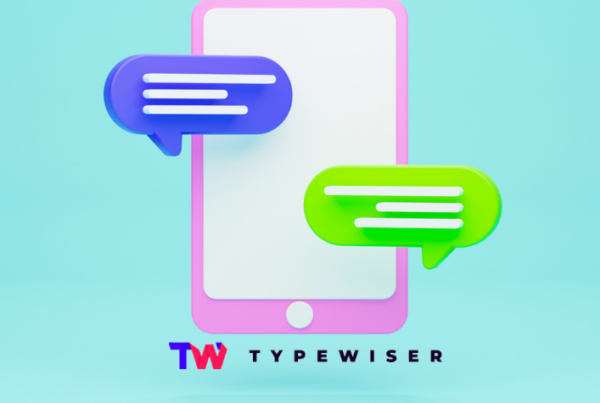Good writing isn’t just about language—it’s about clarity and structure. Documents like grant applications, business proposals, and marketing content need precision.
AI writing tools streamline drafting, formatting, and optimization, yet many still underuse them.
To create clear, high-impact documents in 2025, you need the right AI writing tools.
Here’s a breakdown of the most useful ones and how they can improve your workflow.
Why AI Writing Tools Are Essential
 AI writing tools simplify content creation by cutting down revisions, improving clarity, and making professional-quality writing easier for anyone to achieve. These tools go beyond automation, empowering professionals to produce high-quality documents without the stress of starting from scratch.
AI writing tools simplify content creation by cutting down revisions, improving clarity, and making professional-quality writing easier for anyone to achieve. These tools go beyond automation, empowering professionals to produce high-quality documents without the stress of starting from scratch.
- Efficiency: Cuts down writing and editing time significantly.
- Quality: Delivers polished, professional content.
- Creativity: Offers inspiration and enhances storytelling.
- Customization: Adapts writing for different formats and audiences.
- Consistency: Maintains uniformity across multiple documents.
1. Smart Drafting Assistants
Instead of starting from scratch, drafting tools generate structured outlines or even full drafts based on your input. These tools help by providing:
- Quick first drafts based on minimal input
- Coherent and structured content across different formats
- Inspiration when facing writer’s block
How to Use It: Start with a simple prompt or upload key points, and let the tool generate a foundation. Then, refine the draft by adding details, adjusting tone, and personalizing it to match your voice.
2. Advanced Editing and Grammar Checkers
 Writing errors, awkward phrasing, and unclear sentences can weaken your message. AI writing tools that specialize in editing not only check for grammar and spelling but also improve readability and style. These tools help by:
Writing errors, awkward phrasing, and unclear sentences can weaken your message. AI writing tools that specialize in editing not only check for grammar and spelling but also improve readability and style. These tools help by:
- Refining sentence structure and clarity
- Suggesting vocabulary enhancements
- Ensuring consistent tone and formal correctness
How to Use It: Upload or paste your text and let the tool highlight areas for improvement. Review and apply changes selectively to maintain your unique writing style while ensuring professionalism.
3. Intelligent Research Assistants
Good writing is based on solid research. Some AI writing tools can summarize articles, extract key insights, and even fact-check information for accuracy. These tools help by:
- Speeding up research time
- Summarizing large volumes of data
- Providing citations and references instantly
How to Use It: Input your topic, and let the tool gather relevant insights. Always cross-check critical information to ensure credibility.
4. Summarization and Rewriting Solutions
Need to condense long reports or rewrite content for different audiences? AI writing tools with summarization and paraphrasing capabilities can help distill key messages efficiently. These tools help by:
- Extracting essential points without losing meaning
- Rewriting text in a different style or complexity level
- Adapting content for different audiences and platforms
How to Use It: Paste long text, choose a summary length or rewriting style, and generate a concise, clear version suitable for your needs.
5. Tone and Audience Adaptation Enhancers
Different documents require different tones—formal for proposals, engaging for blogs, and persuasive for pitches. AI writing tools that focus on tone adjustment help ensure your writing matches your audience. These tools help by:
- Analyzing and adjusting tone to match intent
- Enhancing engagement based on audience type
- Maintaining consistency in messaging
How to Use It: Specify the target audience or desired tone, and let the tool suggest revisions to better align with your goals.
6. SEO Optimization and Readability Boosters
 For web-based content, visibility is key. AI writing tools designed for SEO ensure your content ranks well while remaining readable. These tools help by:
For web-based content, visibility is key. AI writing tools designed for SEO ensure your content ranks well while remaining readable. These tools help by:
- Identifying optimal keywords and readability scores
- Enhancing content for search engines
- Improving engagement metrics like time-on-page
How to Use It: Insert your draft, analyze the readability and SEO metrics, and optimize for better online performance.
7. AI Writing Mentor
Effective writing goes beyond simply putting words on a page—it involves structuring ideas logically, reinforcing key arguments, and ensuring every sentence delivers value to the reader. Typewiser works as a mentor, providing suggestions beyond grammar and spelling. They guide you on structuring content, improving clarity, and making arguments more persuasive.
Typewiser is an AI writing guide used for drafting documents. It helps professionals create clear, compelling content that aligns with their goals and their audience.
Privacy, Ethics, and Plagiarism Concerns
While AI writing tools enhance efficiency, they also raise concerns about data privacy, ethical usage, and plagiarism. Users should be cautious about inputting sensitive information, as some tools may store or analyze data. Ethically, AI-generated content should be reviewed to ensure originality and avoid over-reliance on automated suggestions. Plagiarism detection is crucial to maintain credibility, making it essential to fact-check, cite sources properly, and refine AI-generated drafts to reflect authentic, human-driven insights.
The Future of Writing Is Here
AI writing tools simplify content creation, making it easier to produce clear, structured, and professional content. These tools help refine business proposals, strengthen funding applications, and enhance marketing copy, ensuring clarity and precision in every document.
Writers who integrate AI into their process will work more efficiently and produce higher-quality content, without sacrificing their unique voice. Embracing these tools isn’t about replacing creativity—it’s about enhancing it.



